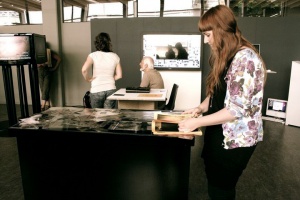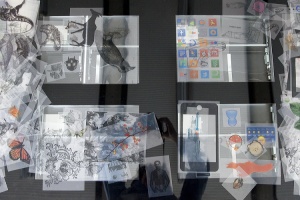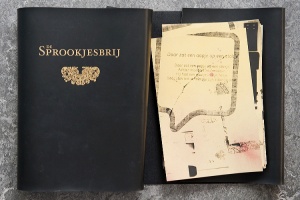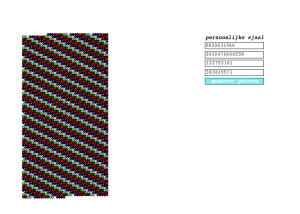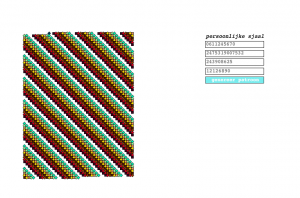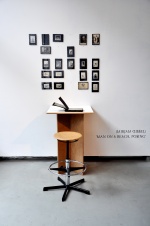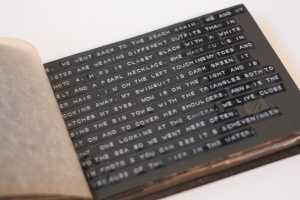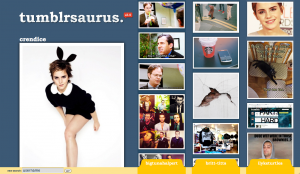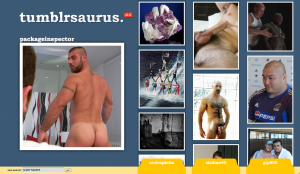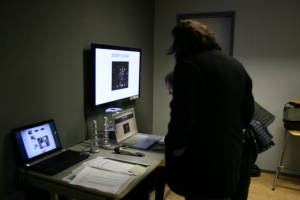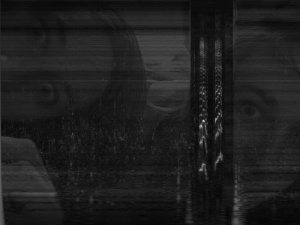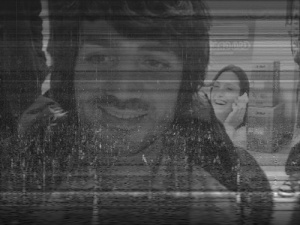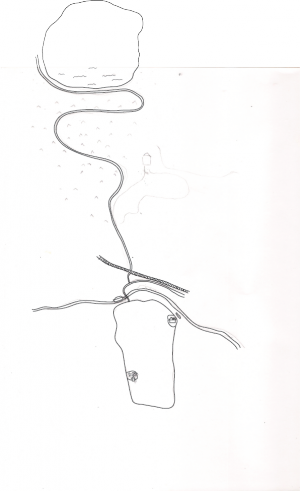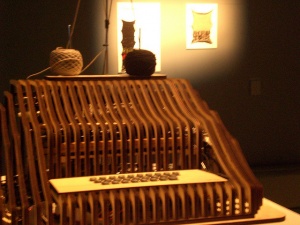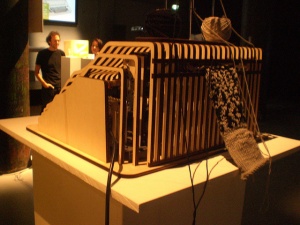User:Mirjam Dissel/proposal draft
General Intro
BITESIZE CHUNKS
I want to work with my dreams,
BUT
not necessarily about the content of these dreams.
I'm trying to discover a pattern between these dreams.
BECAUSE
The subject fascinates me: the information about the past dreams is available to me only while I'm dreaming - not when I'm awake.
NEVERTHELESS,
the dreams are only to be seen as the material I want to work with now. I want to produce a series of works, that I'm going to analyze afterwards and discover what's the underlying pattern of my fascination.
I would like to develop small projects in order to find out for myself what the underlying themes are. I know what I am fascinated with, in order to find a concept for the graduation project, I'd like to trace connections between these different fascinations and reach the core of the matter and come up with a solid proposal, consistent with my methodology.
FOR EXAMPLE:
Memory, remembering, iteration of memory (previous project, 'Man on a Beach, Posing')
Machines that work in a similar way to the process of my dreams (connections, translations).
Previous Practice
Descriptions previous projects
De Sprookjesbrij [The Fairytale Pulp]
This is a table with 4 scanners embedded in the surface that scan at an interval, one after the other. Categorized into 4 open boxes on the table are hundreds of transparent sheets, printed on them are very diverse images and texts. The audience can create a collage and after each round of scanning on one side under the table a printer spits out the combined images.
Inside the table there are in fact 4 iMacs, linked in a network. A script separately running on all machines makes sure the scanners scan and save the image. One script combines the images, not just stacking them on top of one another, one image is displayed small in the upper corner while another may be enlarged. Then it sends it off to the printer, while the first scanner is already scanning again.
I wanted the scanner table to bring people together, this is why you can create a text and image based collage with multiple people. The texts in fact are fairytales, rhymes and urban legends, because all these folk tales are uniting people for centuries. The images are mostly animals (fables). Every day, the stack of paper rolling out of the printer becomes one volume of a collection of fairy tales. I did not want the technology behind the installation to be visible, the scanners are now only visible as a mesmerizing purple lines, magically moving from one side to the other. In a table, they intuitively let people interact with the installation, move the sheets around, but most importantly: interact with each other. They work together on one composition or try to sabotage each other.
Knitting pattern
This is a very small project, very simply said: this is a generator that uses your personal data (telephone number, Albert Heijn bonuscard number, BSN (social security) number, and bank account number) as an input to generate a unique knitting pattern..
Each parameter is responsible for an aspect of the pattern: width, height, color, holes, knit or purl stitch.
I was researching what defines my personal style, or what defines me? For example I buy a scarf, I try to be unique, I try to be fashionable. But when I see someone else walking with that same item months later, maybe combining it completely different, it still feels awkward, in that moment the scarf doesn't feel mine. The government and other businesses distinguish me from all the other people by giving me a number. I tried to combine these two very different concepts of what defines me, fashion and corporate filing.
Man on a Beach, Posing
In an old Dutch photo album from the 1920's a story is told through text written in Dymo tape. The pictures that were once in the album are hung on the wall, themed together on subject. The story in the album starts out plain and descriptive, and as you go on the story gets more informative, more background information is revealed: what beach actually is visited, where the depicted mill stood, character development and through that the relationship between the characters are also shared. The reader gets to know the names of the characters and towards the end, the point of view shifts between the protagonists.
I bought this album on marktplaats.nl (a dutch craigslist.com, for selling second hand items). I started looking at the pictures inside and investigating them closer. With online research, consulting other people and prior knowledge, I found out the basics of the pictures. I took my own journey of discovery as an example (as opposed to giving the reader the full story right away) and in the beginning I placed only a little bit of text and in the end the story climaxes. I used 26 meters of Dymo tape in total.
These pictures in private photo albums function as placeholders for complex and rich memories that are activated when we see these pictures. Abandoned photo albums have something sad about them, because there is nobody left whose memory could be activated anymore by these pictures. I wanted to let people think about memory and remembering, every time you look at a picture and remember the event, you are recreating it in your mind, this is highly connected to imagination. With the pictures taken out of my bought album and replaced by Dymo tape, there is only a textual description visible and you start imagining the story on the fantastic visualizations you have created in your mind. So by making up an entire story that could be called 'memory', I am reactivating the album by reconnecting it to a potential memory. It could be the story told by the pictures. The story could also be different - we simply don‘t know.
Tumblrsaurus V2.0
The Tumblrsaurus works in a browser and has a mainpage where a user can insert his/her username and click submit. After this you will be lead to another page, where on the left a slideshow of your own collection is visible, and on the right 3 other users are visible, with their latest 10 photo posts shown in a column (so, three columns are shown on the right). These three users have a collection that is an ultimate match to yours. At first glance, each individual picture does not have too much in common with the other pictures (colours, subjects, shapes might be of a totally different kind), but each Tumblr user has a specific taste in pictures, which makes their collection as a whole unique and cohesive. Tumblrsaurus is designed to find matching interests based on communication (as opposed to keyword search or image comparison), therefore it finds matching collections and images that somehow seem to have something to do with each other, even though one picture could be featuring a sparkling horse and the other a nuclear disaster.
The script that is triggered after pressing submit is key to this: it indexes all your previously posted photo posts, your 'collection' so to say. Each post has 'notes' attached to it (all the reblogs and likes of this post). The script puts all these connections between other users and you into a database and determines with whom you've interacted the most.
Through the Tumblrsaurus I wanted to compare image collections. Unlike music, which is already labeled, established, has a background story, etc, the origins of these images are for the most part completely unknown. It is so uncanny that these loose images on the web can be pinned down to something so ungraspable and indescribable. The photos in the collection all have something in common, but its mostly a feeling, they share the same elements, but I couldn't say that collection one all has black and white pictures or the other collection has a war theme. It's all a mix, and it's up to the person to decide what fits in their collection, and that's ultimately what shows in this project: the hand picked choices of people, which cannot be put into keywords, colours, shapes, or other regular image comparisons.
Desert of Sine
From a computer a user can upload any (webcam) image to the server and the computer will turn it into a 1 minute loud futuristic sound using sine waves. This plays through a speaker set. At the same moment a microphone connected to the same computer will record that sound again with background noises present, and transform it back into an image. This way the image will show the interference during the transformation, capturing time and space of the surroundings. The resulting images are black and white and grainy all over, with peaks here and there. They are uploaded to the internet and shown on another screen simultaneously.
The computer actually performs a set of operations: it continuously checks for new image uploads, transforms the image into sine waves (bmp format required, so it converts it first) and at the same time it starts a recording program. When transforming and recording have finished, it transforms the recording back into an image and uploads it again. This is all behind the scenes. All we see is a window to upload a file, when we do this we hear a sound, and after a while, on another big screen we see the transformed image.
This project was done for the Rebelhuis event, which was based on the Speedshow concept (rent the computers in an internet cafe for one night, show your work). I wanted to capture the space and time of the night, sound in addition to image. With the growing popularity of the digital camera we have collected loads of snapshot photography that become ever more meaningless, and I wanted to add something more. The photographs people took become some sort of map because of the extra layer of data that is embedded. On one photo I can see Birgit singing and in the other Laura clapping, in neither they visually doing this.
METHODOLOLOLOLOGY
My projects revolve around collectivity. I like to work with a collection, whether already present or made on the spot by participants. Next to collectivity, I like to work with individual fantasy and imagination next to a collaborative and collective memory. A key aspect in the projects is the role of choice. How do we choose? The manual labour that is involved in adding to, arranging or augmenting the collection in ways that are instinctual but mostly come from tradition and semiotics are a thing for me to play with and investigate. The personal perspective from this manual labour, sometimes craftsmanship, gives it value and uniqueness. I then deconstruct and rearrange the collection myself. The different ways of organizing this data become the final product. Or, the work consists of the (re)arrangements of others, as an interactive platform to continue from.
Usually, my work is a result of a broad and long research. I need dialogue with teachers and fellow students to get stimulation. At the same time I like to distance myself from the project to let things bed down and get a broader perspective. I do this by looking at other people's work, at what's already out there, so I can take different opinions into consideration. Next to that, I make small prototypes, from there it naturally evolves into a conceptually solid project.
More on graduation project
What have I been doing so far?
I have been experimenting with writing down my dreams: voice recording, writing down these dreams immediately after waking up, writing down notes after waking up and making a story out of it later. I've notices very different experiences between these methods: when listening to the voice recording again it's almost as if I've never heard of this story before, because when recording I was free to speak, I wasn't 'obstructed' by creating grammatically correct sentences or the plot. When I write down the dreams much later I still remember the dream, but I forget if and which previous dream popped up in my head while dreaming, but I can sometimes remember other dreams afterwards, when they have something to do with the scene I was actually dreaming about that night. My dreams can be found here: [1].
I start the previously dreamt dreams with 'I remember a dream', to indicate an interruption while dreaming. In a while I hope to create some sort of network, possibly programmed.
As a small test I already made an adaptation of my haiku maker, I used one of my dreams to create new things I could have dreamed about.
These sentences look very plausible, in a dreamworld they could have happened, and most of all, they are still written the way I would write them down.
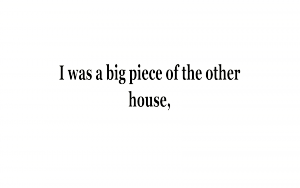
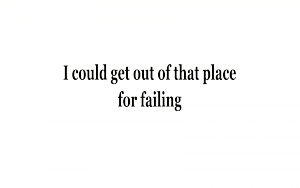
I have started to make a (continuously changing) map out of my dreams. The places I dream about all seem to be based on the places I know from childhood. The most occurring places are: my parents' backyard and my grandma's living room and (back)yard, both situated in my hometown, Dalfsen. When drawing the map I noticed that I always dream that the north and south are the other way around.
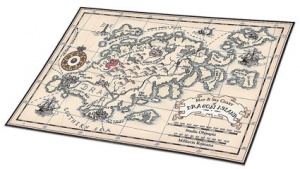
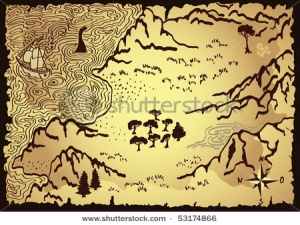
A lot of times it happened that I dream of brilliant designs or ideas in my dreams, that are the basis of future projects. I'm starting to draw everything I think is interesting. It's proven to be very difficult to draw something that in a dream can make perfect sense, but in the physical world cannot exist (think M.C. Escher).
Sketches for ashtrays that I saw in my dream:
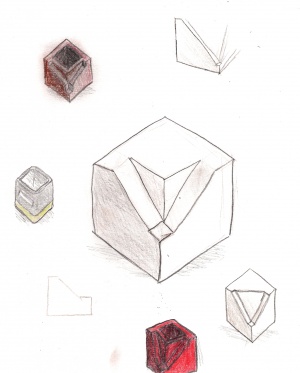
Sketches of a laundry drying machine that I'm just not able to draw, even though I can still recall looking at the towels and the feeling the surroundings gave me, I can't precisely describe how everything looked.
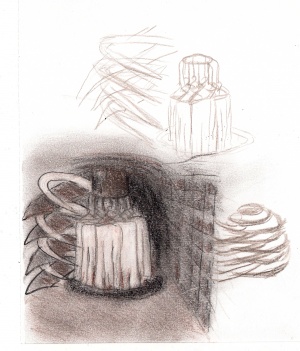
I dreamed of a collective work of paintings, I think 4 by 4 massive canvasses. Here is the first column:
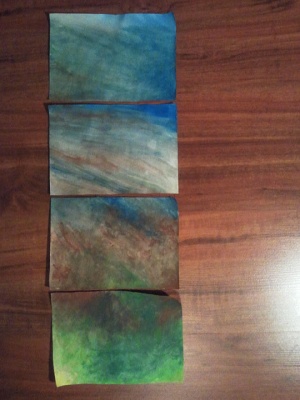
More ideas that I will work out:
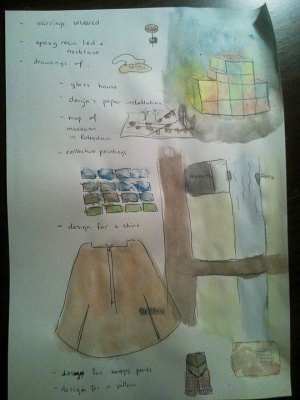
Inspiration
Next to this I have also started a collection of inspiration. Pictures of projects that I think are interesting and relate to this project in one way or another.
- TK730 - eTextiles Workspace group (2011, at V2)
Typewriter that 'translates' what's written into knitted fabric.
The explanation on the V2 website says: "What happens when senses are cross-wired in the brain?
Can data convey different meanings when interpreted as a purely visual object?
What other ways of interpreting a single piece of data could there be? This is what the TK Series attempts to explore."
Which I think fits my dream descriptions very well, sometimes it happens that you cross-wire people, objects, places.
- QR scarf and DIY QR scarf, using an electronic knitting machine. You first have to program the machine, and then move the thread back and forth by moving the carriage from left to right and back .
I'm not so much interested in the QR code itself, but I like the idea of the two "technologies" meeting.
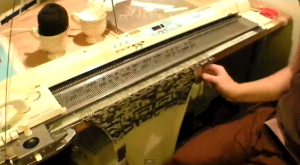
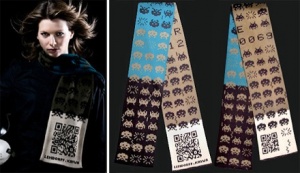
http://youtu.be/bZm6hUXgYnU
- Heart Beats - Julie Legault (2011, at V2)
Time according to heartbeats. It reminds me of my own project (shown just below) where I wanted to explore the relativity of time, depending on what you are doing or how you are feeling
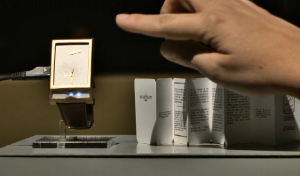
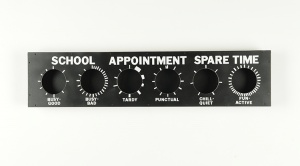
(the metal timer that is supposed to go in the holes is missing in this picture)
- Chords to open up connections:
Chord keyset (left hand) by Doug Engelbart, 1968

And a newer version by Infogrip (right hand), the BAT.
3 buttons for the thumb and one for each of the other fingers.

The possible combinations of keypresses.
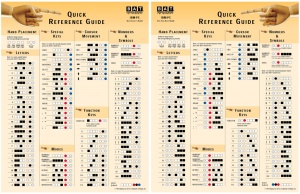
- Fold Loud, JooYoun Paek, 2007
Through navigating through an origami piece one creates a melody.
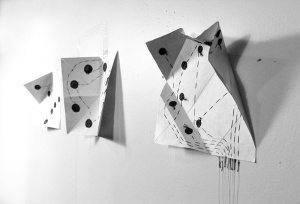
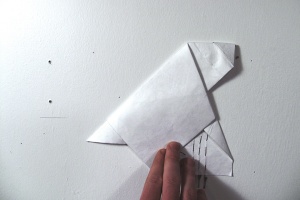
What am I looking into?
- Sigmund Freud - The Interpretation of Dreams
- Sadie Plant - The Future Looms, Weaving Women and Cybernetics
- Janet Murray - Hamlet on the Holodeck: The Future of Narrative in Cyberspace
- Michael Joyce - Afternoon, A Story (hypertext, http://www.wwnorton.com/college/english/pmaf/hypertext/aft/)
- Emanuel Swedenborg - Drömboken [Journal of Dreams] (a scientist in the 1700 starts having his dreams that influence his own behaviour, and his life becomes influenced by his dreams. He becomes a theologian, claiming that God is talking to him)
- William Blake (poet, painter, printmaker inspired by Emanuel Swedenborg)
- movie 'Waking Life' (about a guy who is lucid dreaming. Or actually: the dream he is having). Trailer: http://www.youtube.com/watch?v=uk2DeTet98o

